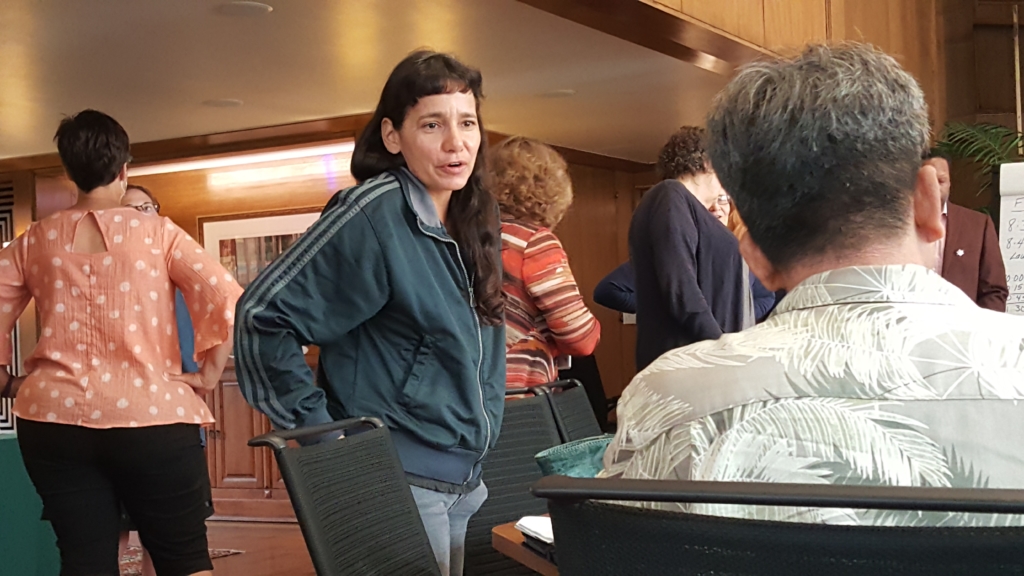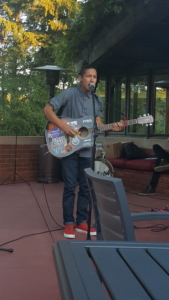“Our Communities: A Symposium on the Arts”
Maryo Gard Ewell
THESE ARE EWELL’S PERSONAL NOTES AND REFLECTIONS ON THEMES FROM THE SYMPOSIUM. THESE ARE NOT NOTES FROM THE SPEAKERS WHOSE PRESENTATIONS (WRITTEN AND AUDIO) ARE ELSEWHERE AS STAND-ALONE FILES. READERS ARE ENCOURAGED TO LISTEN TO THESE AND DRAW THEIR OWN CONCLUSIONS.
Themes that ran through the conversations:
- Unleashing the individual

- Building relationships
- Belongingness
- Redefining democracy
- Accountability
- Vocabulary
- Creating settings
- Specialization/human community pendulum swings
- Training for cultural activists
- Relationship to, and meaning of, place
- Transformational vs transactional
- Building scaffolding vs infrastructure
- Support for cultural activists
- Intentionality
What are some useful questions and observations we can elicit from our history?
- Knowing our history, including the motivations and “results” of what has happened before, as well as understanding how context has affected action, will help us notice and evaluate what we do and don’t believe to be truths that last through time and guide our work.
- There is a pendulum between “specialization” and the “human community” [philosopher Baker Brownell was cited here] – there are times when we must deepen specialized knowledge; but then the pendulum swings and we are in a time when we must put the knowledge together in a new kind of understanding of what a human community is. We are in a time of building a human community but, of course, there are no guideposts for doing that.
- “Culture is fluid, but policy is fixed.” We have developed policies that react, instead of respond, to present conditions + expectation/vision of the future. Is it possible to envision truly transformative policy-making? What would that look like?
- Funding structures have been wonderful, but have tended to create a single, monolithic approach to what is “right.” In fact, “funding structures tend to have made us timid.”
- Funding structures also tend to have end dates by which the funder expects “results” or to know what the “return on investment” has been. Are we able to envision funding structures that support best practices in process, that are able to work with communities over a long period of time, recognizing that “results” may not truly be achieved for years?
- The NEA’s funding – even for locals – was top-down, except for Expansion Arts which was more a call-and-response model. Is it possible for funders to truly support grassroots movements which are often messy and take a lot of time? It is much easier to support structures that promise results than processes that promise to open doors!
- Even well-meaning funders have left groups out; it takes a long time to re-build promise and trust for groups that feel ignored.
What’s a healthy community, and where does creativity fit?
- Today most everything is or can be privatized, from water bottles (instead of sharing drinking foundations) to telephones (no public phones) to libraries (google). There’s not too much that affects our ongoing, daily, “ordinary” lives that’s public. We need to re-define “public good.”
- In a healthy community there are systems and support for individual and collective creative exploration. Conversation and exchange is valued. Creativity is seen as a way to move the processes forward.
- You can envision a “maslow’s hierarchy” for communities and there is a role for creativity/arts at each level: “Basic needs” (includes absence of fear as well as food, housing, job); Physical/mental health; Education/pursuit of one’s voice and talent; Spiritual well-being; Feeling of belongingness; Opportunity for participation in making a better setting for the next generation.
- A healthy community in the United States explores and manifests the possibility for truly “living a democracy” – meaning ensuring that everyone has listening skills, thoughtful speaking skills, and is welcome to participate in public life.
- A healthy community is one where people are accountable to one another…and has explored what that means to them.
- A healthy community is built upon relationships that are organic. Often an “intervention” doesn’t do anything about relationship-building, so our role may more appropriately be about offering “microdoses of relationshipship building opportunities.”
- It’s desirable for a community to recognize that there may be change agents, like cultural activist, who must be offered a basic wage (or housing, or etc) in exchange for their community work. Are there ways we could make this happen (though we are tempted to wring our hands and say “it never will”?)
Some questions to ask to help us plan and evaluate our work:
- Who isn’t in the room?

- Are the people who are affected by policy and funding, also invited to help shape these policies and design support systems?
- Is democracy being built – in other words, are people acquiring and using skills of listening and speaking and participating? Do people increasingly believe that they belong in the community and have the right to participate?
- Are we building systems that are appropriate for a “human community” of interconnected/interdependent people and systems, or are we simply supporting the status quo (even if we are making things better for people in it)?
- Are community conversations envisioning a new notion of “public good?”
- Are we finding a way to mentor and support people whose mission is transforming systems?
- Are we helping to build new relationships and deepen old relationships? Are we helping people know one another as “whole persons”?
- Are we enhancing our accountability to one another?
- Are we using language and vocabulary that’s appropriate for what we envision? Let’s take a look at our language … can we get it back to human basics (words like “joy,” “awe,” “commitment,” “meaning,” “authenticity,”) rather than organizational/bureaucratic language (words like “process,” “product,” “return on investment”)?
- Are we intentionally creating settings for ongoing relationship-building – not just doing projects that are good for now?
- Perhaps the “Design Standards” articulated by Bill Cleveland can be adopted by community cultural workers as our commonly-shared belief system, informing our actions and assessment of our actions?
